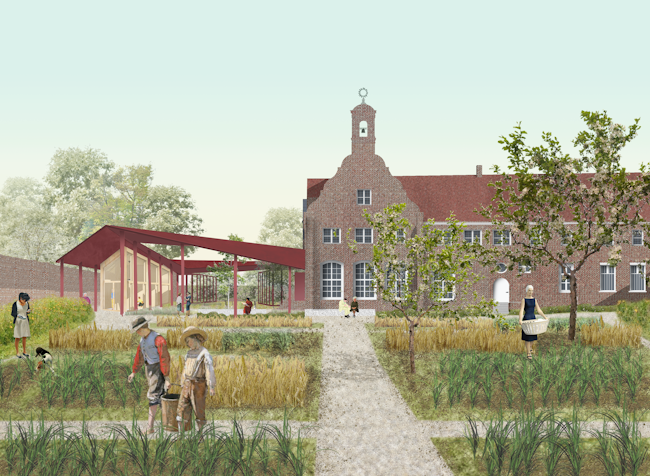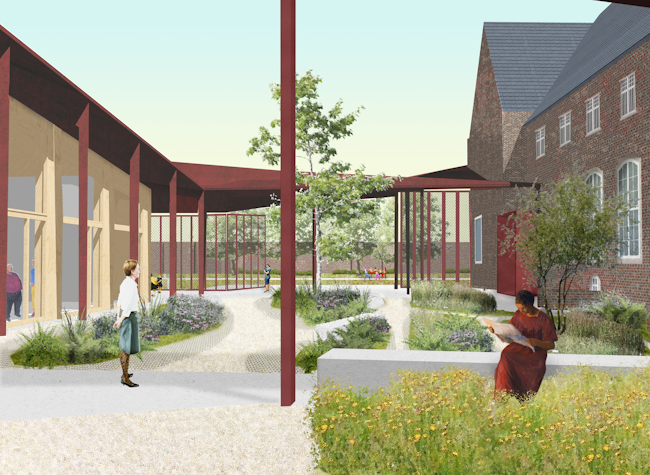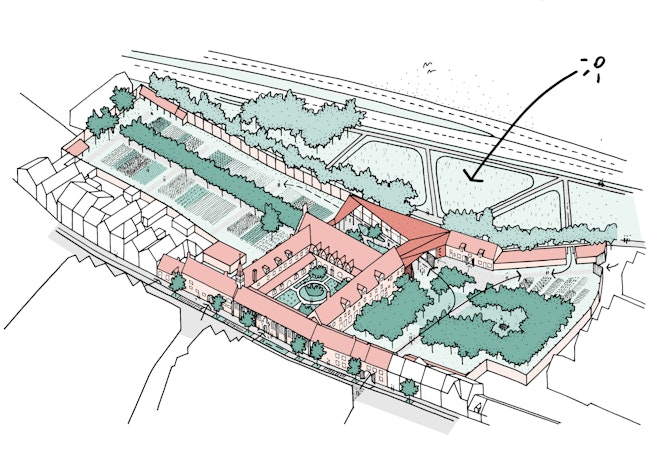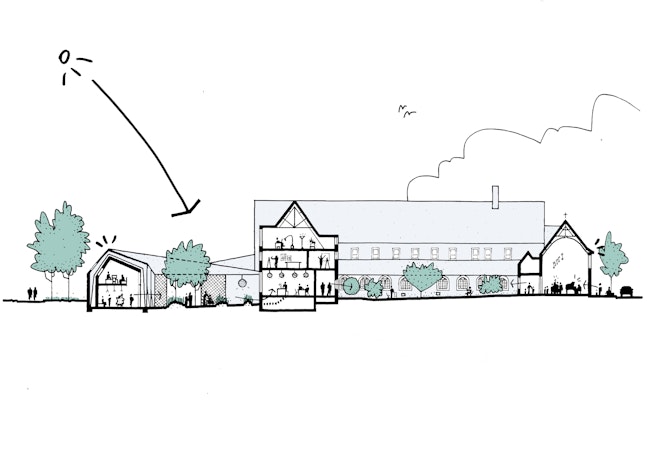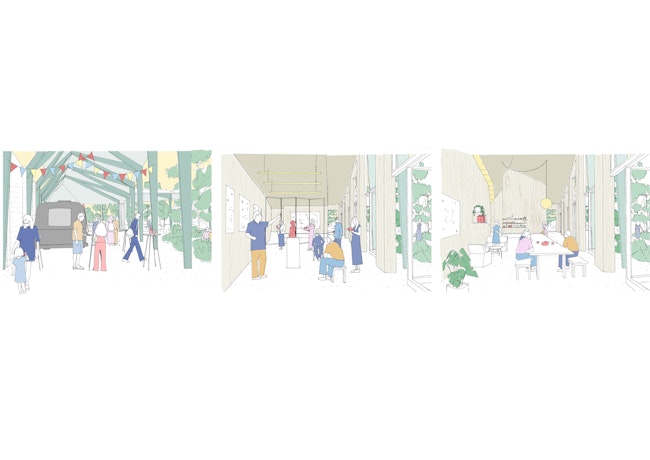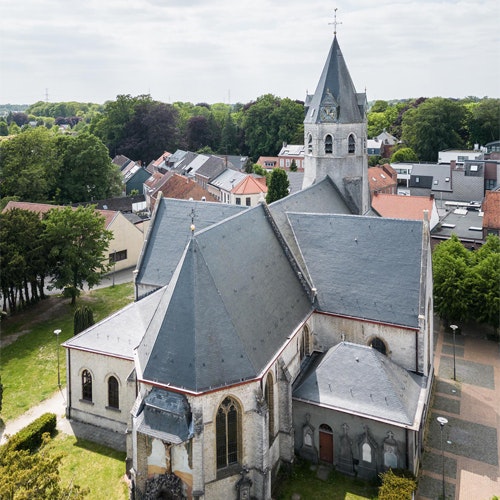St Godelieve abbey
Religious buildings
Design of a master plan for the overall restoration and redevelopment of the St Godelieve abbey in Bruges and execution of its first two phases. A collaboration between B-architecten and B-juxta.
A future for the abbey
The existing convent faces the Hortus Conclusus. This garden is the heart of the site, around which abbey life took place. As the most sacred garden, it was an important place of silence and contemplation.
The sisters of the St Godelieve abbey lived self-sufficiently. Their daily lives were therefore closely linked to the various gardens around the abbey. The vegetable, herb and flower gardens were dedicated to subsistence farming, while the orchard, which was linked to the farm, was located more outside the convent. The use of these gardens will be restored, both in terms of design and use: in the vegetable garden, urban agriculture will be reactivated and put at the service of inspirers, visitors and local residents.
In the sisters' time, the operation of the abbey was based on 'ora et labora'. Moments of prayer were alternated with work and effort. From this principle, we let two experiential routes appear: the convent track shows the site as a place of silence, contemplation and security, while the abbey track shows the site as a place of productivity.
Hortus Connectens, catalyst of the master plan
Our master plan creates space for encounters within these experiential routes. The demolition of the washhouse and the introduction of a new pavilion create a new, connecting garden: the Hortus Connectens. As the centre of the abbey, it forms the counterpart of the Hortus Conclusus, which remains the centre of the convent.
Around the Hortus Connectens, we designed an elegant canopy as a reinterpretation of the sisters' existing resting pavilion. The Hortus Connectens and its function as a second enclosed garden allow the site to welcome its users without compromising the heritage value of the abbey itself.
At this new junction, we envision an abbey point where visitors will have the opportunity to learn about the story of the site, buy local products and meet each other. Opposite of the abbey point, there will be a second entrance to the convent, focusing on the group experience and responding to the gradient between abbey and convent.
This way, the Hortus Connectens and its pavilion, as a counterpart to the Hortus Conclusus, form a pivotal point between the orchard and the vegetable garden, between the abbey and the convent and between the past and the future. The site can be used flexibly within the operation of the future convent and can be approached from different perspectives. The entire master plan, and the Hortus Connectens in particular, thus guides the site towards a new future while respecting the place's spirit.


